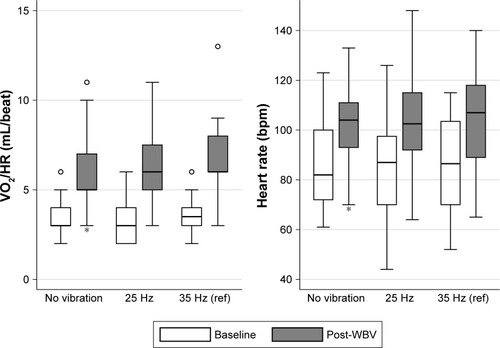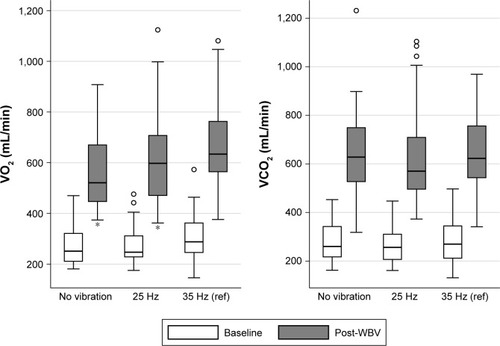Figures & data
Table 1 Demographic, clinical, and descriptive functional characteristics at baseline
Table 2 Differences in the cardiac, metabolic, and ventilatory variables in relation to the frequency of training with the vibratory platform
Figure 1 Description of cardiac variables at rest and at different training frequencies.
Abbreviations: VO2/HR, oxygen pulse response; WBV, whole-body vibration.

Figure 2 Description of metabolic variables at rest and at different training frequencies.
Abbreviations: VCO2, carbon dioxide output; VO2, oxygen uptake; WBV, whole-body vibration.

Figure 3 Description of ventilatory variables at rest and at different training frequencies.
Abbreviations: br/min, breaths per minute; RR, respiratory rate; VE, volume of expired gas; Vt, tidal volume; WBV, whole-body vibration.

